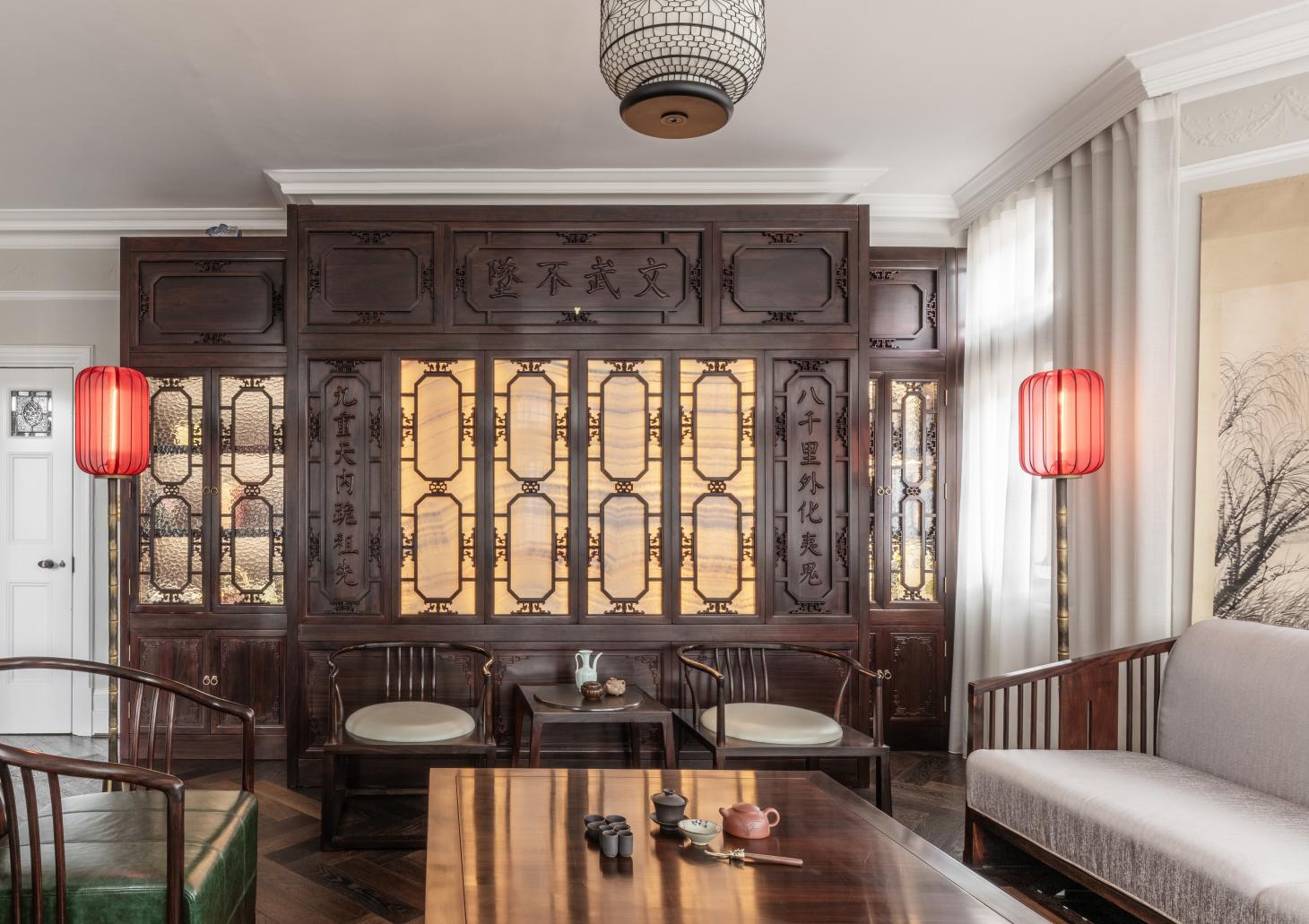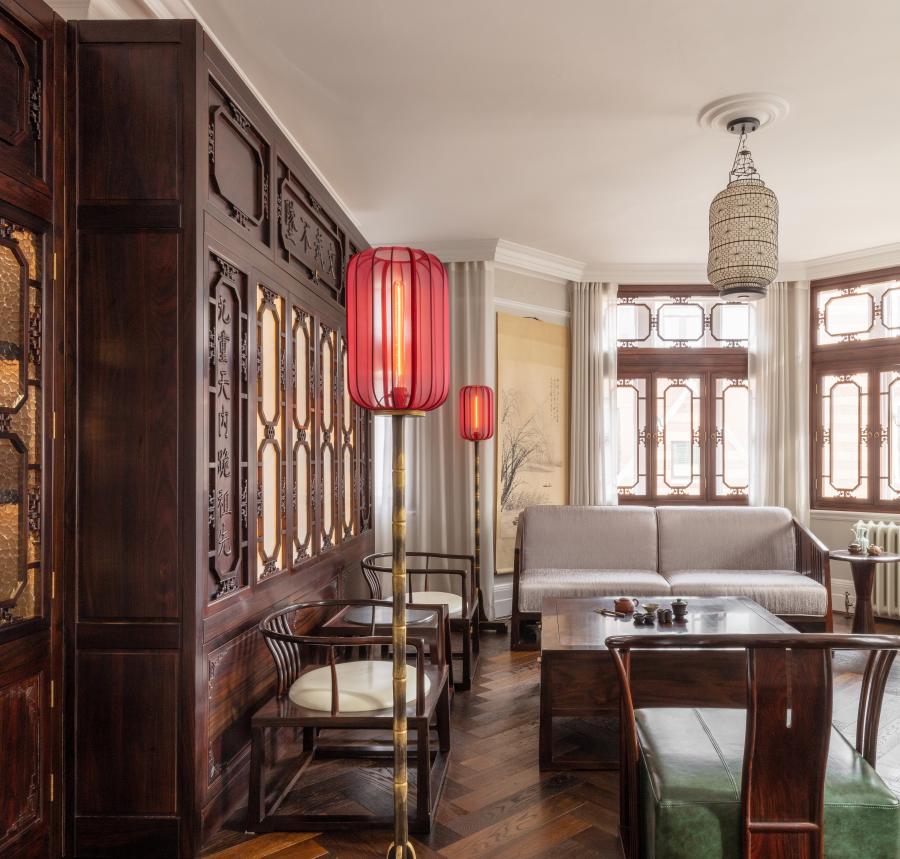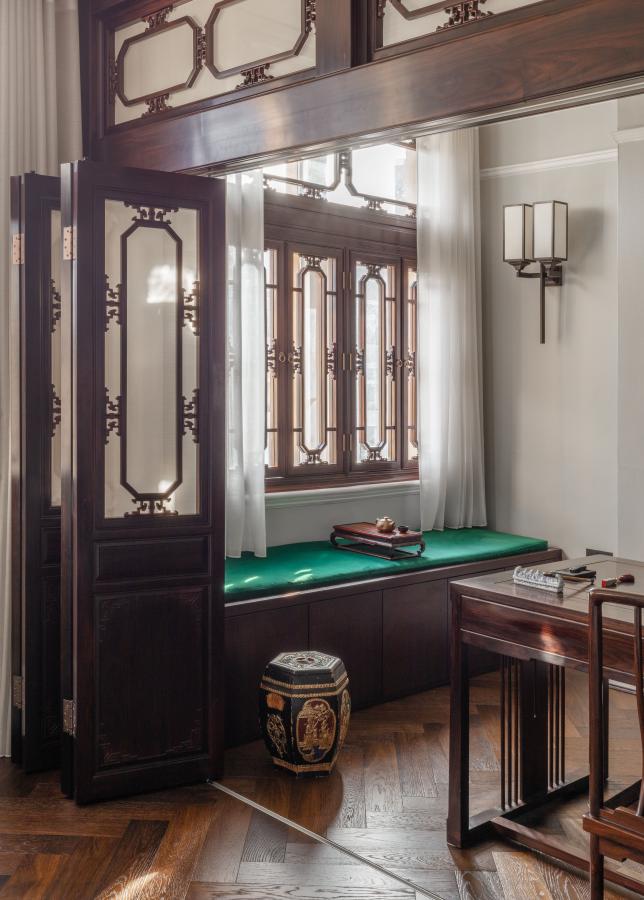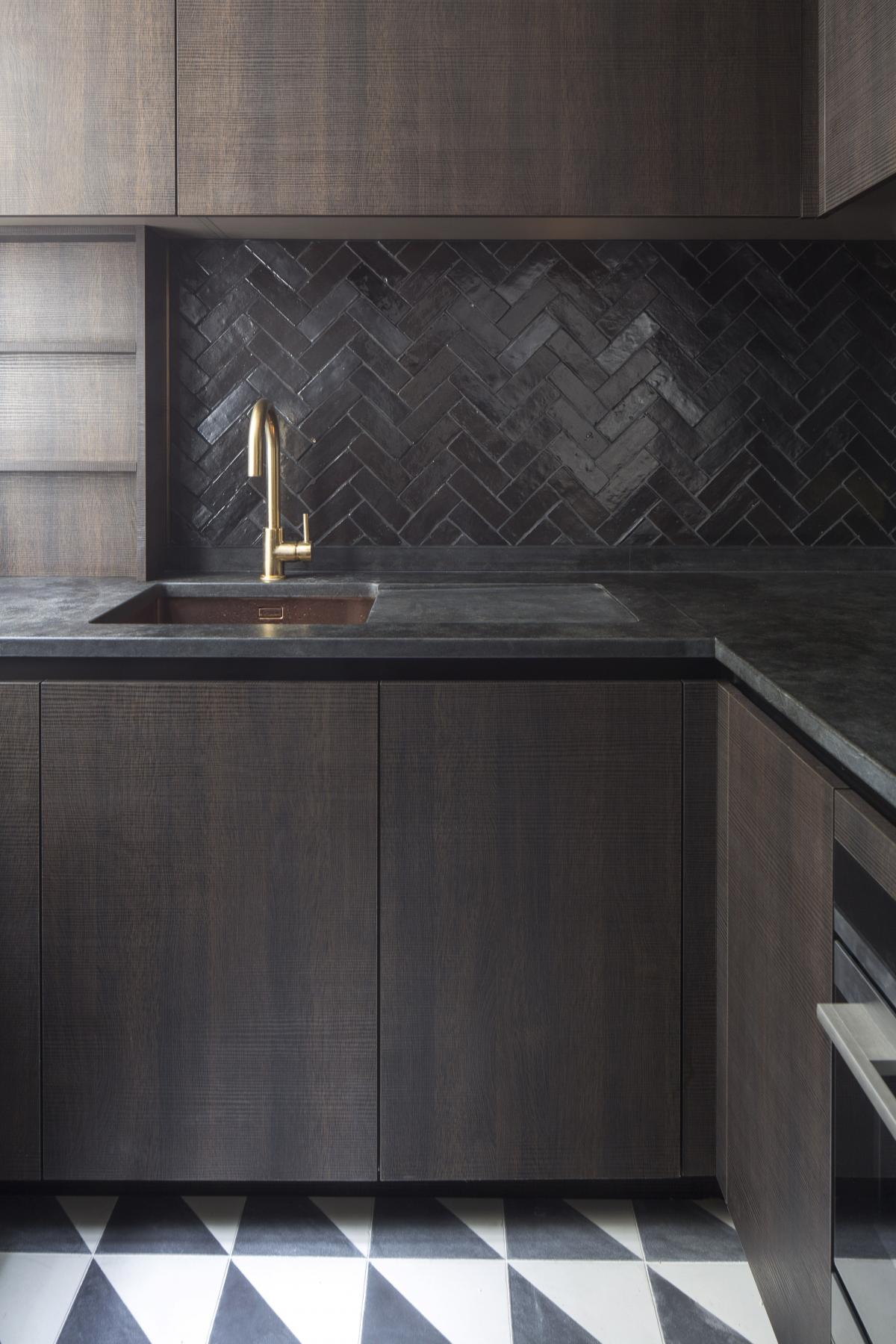London apartment interior honours heritage of Chinese calligraphy
Interior architecture studio Holloway Li redesigns a London apartment interior into a haven of cultural heritage and Chinese calligraphy
Nicholas Worley - Photography

A central London home has been transformed thanks to an apartment interior design with a unique twist, by creative studio Holloway Li. The interior architecture practice, led by Alex Holloway and Na Li, responded to the call of a client who wanted to refresh their private home and tailor it to their needs. The apartment, located in an Edwardian Arts & Crafts Grade II-listed building, is now redesigned as a luxurious haven that draws on the cultural heritage of both the structure and the owner, who is Chinese calligraphy expert, scholar and art collector.
The designers worked with a blend of Eastern and Western influences, mixing ‘historical and cultural identity’, while infusing a clear contemporary sensibility throughout. They used hand-carved rosewood joinery elements and architectural wood, specially sourced and delicately carved with traditional vernacular Chinese motifs. ‘They reflect the calligrapher’s craft,’ they explain.

Architectural updates to the whole interior were needed throughout to make the space fit for 21st-century use, while Holloway and Li also created a series of bespoke furniture. The pieces were conceived to work as a whole, alongside the range of English antiques and fabric throughout.
‘[Our] ideas and innovations were heavily inspired by Chinese traditional philosophy, drawing on immersive research. Ancient rituals and narratives were used as inspiration for every detail of the space – from spatial planning and detailing to the selection of furniture and final dressing,’ say the interior architects.
A rearrangement of the interior layout led to the creation of a new, open, central space that includes a study, a dining room and a formal reception. These functions are divided as well as interconnected through a set of rosewood bi-fold shutter screens that define the apartment’s aesthetic.
‘The two spaces represent “form” (Chinese: 文) and “matter” (Chinese: 質) respectively,’ Holloway and Li explain. ‘According to Confucius, form and matter of objects and people are equally important and one cannot exist without the other. The drawing room is the form, where the best of the apartment is exhibited, while the dining room and study is the matter.’





INFORMATION
Receive our daily digest of inspiration, escapism and design stories from around the world direct to your inbox.
Ellie Stathaki is the Architecture & Environment Director at Wallpaper*. She trained as an architect at the Aristotle University of Thessaloniki in Greece and studied architectural history at the Bartlett in London. Now an established journalist, she has been a member of the Wallpaper* team since 2006, visiting buildings across the globe and interviewing leading architects such as Tadao Ando and Rem Koolhaas. Ellie has also taken part in judging panels, moderated events, curated shows and contributed in books, such as The Contemporary House (Thames & Hudson, 2018), Glenn Sestig Architecture Diary (2020) and House London (2022).
-
 We asked six creative leaders to tell us their design predictions for the year ahead
We asked six creative leaders to tell us their design predictions for the year aheadWhat will be the trends shaping the design world in 2026? Six creative leaders share their creative predictions for next year, alongside some wise advice: be present, connect, embrace AI
-
 10 watch and jewellery moments that dazzled us in 2025
10 watch and jewellery moments that dazzled us in 2025From unexpected watch collaborations to eclectic materials and offbeat designs, here are the watch and jewellery moments we enjoyed this year
-
 Patricia Urquiola reveals an imaginative inner world in ‘Meta-Morphosa’
Patricia Urquiola reveals an imaginative inner world in ‘Meta-Morphosa’From hybrid creatures and marine motifs to experimental materials and textiles, Meta-Morphosa presents a concentrated view of Patricia Urquiola’s recent work
-
 Arbour House is a north London home that lies low but punches high
Arbour House is a north London home that lies low but punches highArbour House by Andrei Saltykov is a low-lying Crouch End home with a striking roof structure that sets it apart
-
 A former agricultural building is transformed into a minimal rural home by Bindloss Dawes
A former agricultural building is transformed into a minimal rural home by Bindloss DawesZero-carbon design meets adaptive re-use in the Tractor Shed, a stripped-back house in a country village by Somerset architects Bindloss Dawes
-
 RIBA House of the Year 2025 is a ‘rare mixture of sensitivity and boldness’
RIBA House of the Year 2025 is a ‘rare mixture of sensitivity and boldness’Topping the list of seven shortlisted homes, Izat Arundell’s Hebridean self-build – named Caochan na Creige – is announced as the RIBA House of the Year 2025
-
 In addition to brutalist buildings, Alison Smithson designed some of the most creative Christmas cards we've seen
In addition to brutalist buildings, Alison Smithson designed some of the most creative Christmas cards we've seenThe architect’s collection of season’s greetings is on show at the Roca London Gallery, just in time for the holidays
-
 In South Wales, a remote coastal farmhouse flaunts its modern revamp, primed for hosting
In South Wales, a remote coastal farmhouse flaunts its modern revamp, primed for hostingA farmhouse perched on the Gower Peninsula, Delfyd Farm reveals its ground-floor refresh by architecture studio Rural Office, which created a cosy home with breathtaking views
-
 A revived public space in Aberdeen is named Scotland’s building of the year
A revived public space in Aberdeen is named Scotland’s building of the yearAberdeen's Union Terrace Gardens by Stallan-Brand Architecture + Design and LDA Design wins the 2025 Andrew Doolan Best Building in Scotland Award
-
 The Architecture Edit: Wallpaper’s houses of the month
The Architecture Edit: Wallpaper’s houses of the monthFrom wineries-turned-music studios to fire-resistant holiday homes, these are the properties that have most impressed the Wallpaper* editors this month
-
 A refreshed 1950s apartment in East London allows for moments of discovery
A refreshed 1950s apartment in East London allows for moments of discoveryWith this 1950s apartment redesign, London-based architects Studio Naama wanted to create a residence which reflects the fun and individual nature of the clients